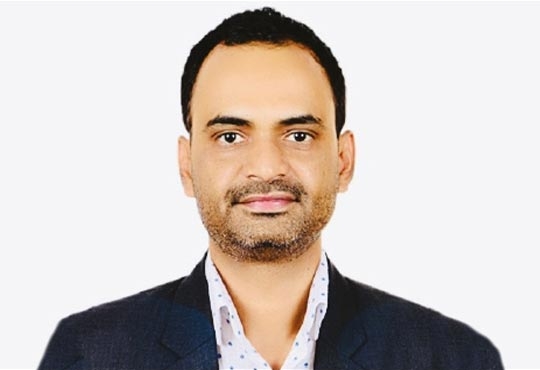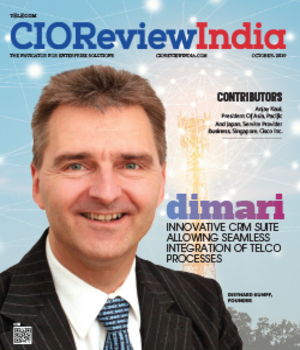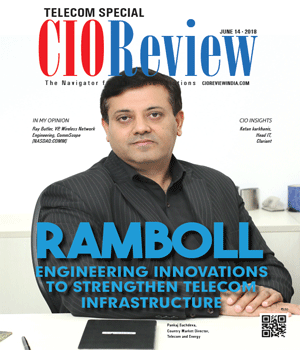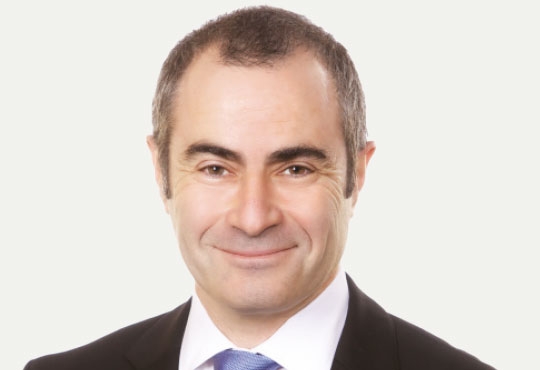
Innovating in Space and on the Ground Will Advance Satellite in the Broader Communications Landscape
Thierry Guillemin, EVP & CTO, Intelsat | Friday, 01 September 2017, 06:42 IST
 Satellite-enabled services have been present in the daily life of millions of people around the globe for a long time,from broadcasting to enterprise networks, from maritime communications to disaster recovery .Today the satellite sector is enjoying a renaissance, with technological advances increasing our capabilities in orbit while at the same time the demand for broadband connectivity anytime and anywhere is growing around the world. Analysts have identified billions of dollars of incremental opportunity in enterprise, mobility, media, government, and Internet of Things connectivity in the next five years alone.
Satellite-enabled services have been present in the daily life of millions of people around the globe for a long time,from broadcasting to enterprise networks, from maritime communications to disaster recovery .Today the satellite sector is enjoying a renaissance, with technological advances increasing our capabilities in orbit while at the same time the demand for broadband connectivity anytime and anywhere is growing around the world. Analysts have identified billions of dollars of incremental opportunity in enterprise, mobility, media, government, and Internet of Things connectivity in the next five years alone.
In order to meet those demands, our customers have told us they want high-performance capacity that is efficient, tailored to meet their needs and able to be implemented rapidly. Technologically, the satellite sector is creative as ever. With next-generation high-throughput satellites - such as our Intelsat Epic NG platform – being readied for launch, the sector has responded to customer needs. Combining technological innovation with inherent advantages such as reach, ubiquity, reliability, point-to-multipoint economics, fast deployment and security, satellite will play a larger role in addressing the needs of a mobile broadband world.
Today, the satellite sector is focuse don new technologies that will usher in a sea change in terms of performance and accessibility. By that, I mean we must look beyond incremental improvements to our technology. We must re-envision and simplify your solutions for our customers’use. If satellite operators focus on advancing a satellite’s performance, economics and accessibility, satellite will move away from its current specialty positioning into the larger communications ecosystem.
There is a perception for some that satellite is a slow, expensive and complicated technology to incorporate into a network. This could not be further from reality. Satellite has made tremendous strides in performance, particularly with the introduction of next generation high throughput satellite technology that has the potential to reduce significantly the cost per bit delivered, as well as increasingly smart pay loads that will provide a level of flexibility and market adaptability of the space segment not seen before. These new satellites will deliver the throughput, quality, flexibility, security, adaptability, and scalability that customers need, particularly as technology advances and consumer needs keep changing at a rapid clip.
But it is not just about building high-throughput, high-performance satellites. The total cost to the customer of perating a satellite based solution is what matters. That means considering capital, installation and operations costs as well. Current design imperatives incorporate all aspects of the service delivery business model, changing the former perception of satellite to one of broadband enabler, for applications ranging from aeronautical broadband to 3G backbone for the developing world.
We think that there are compelling innovations in accessibility making it easier for customers to access our satellites that will change the way our solutions are deployed within a network. The satellite dishes that are used today, depending upon size, often require a specially trained technician at the user location. Site power requirements might be dramatically out of sync with the local environments. Once installed, the technician needs specialized equipment to acquire the signal in a manner that doesn’t knock neighboring networks off the air.
We have prioritized this shortcoming by undertaking multiple efforts in this area, partnering with those in the broader satellite and telecom ecosystem, including leveraging innovations in new technologies like phased arrays and meta materials. Our work with antenna manufacturers such as Kymeta and Phasor are one example, where our combined efforts will lead to more powerful, lower form factor antennas that will be easy to install, and able to automatically acquire and track the satellite signal whether they are mounted on fixed or mobile platforms.
The end result: satellite broadband will be an option for almost any connected object or site, enabling new services for segments as diverse as the automotive industry, business jets, and wireless operators deploying 3G to the remote corners of Latin America.
Finally even though Intelsat already has an extensive fleet of geostationary satellites that covers the globe several times over and can reach fixed and mobile users in most regions of the world, we recently announced an investment in the One Web low earth orbit satellite constellation. This is consistent with our strategy to enableinnovation that can complement and expand the capabilities of our space infrastructure, adding in this case polar regions access for the international routes of our mobility customers or providing higher elevation angles in urban areas for Internet of Things applications of the future like connected cars. Satellite is poised to be a very powerful enabler of machine to machine communications and we want our infrastructure to be ready to play a significant role in this growing sector.
The satellite sector will change more in the next 10 years than it has in the last 50, and our work in the past few years alone has us excited about the potential to expand the role of satellite as the world increasingly becomes broadband dependent. With innovation in space matched by new developments on the ground, CIO’s needing broadband everywhere should be thinking about how satellite will fit into their next generation networks.
CIO Viewpoint
Big Data and the Big Opportunities
By Bipin Kumar, Head - IT & Projection at Cinèpolis India
Optimized Networks For An Agile Workplace
By Steve Miller, CIO, Steelcase
The Hidden Revenue Potential in Mobile Big Data
By Manuel Stopnicki, CTO, Tektronix Communications
CXO Insights
Unlocking Efficiency: The Future of Smart...
By Ganesh Lakshminarayanan, CEO – India, Airtel Business
Data Center Modernization: Transforming the...
By Rajesh Tapadia, COO, Nxtra by Airtel
Revamping Workflow In Pharma Industry With...




.jpg)
.jpg)




